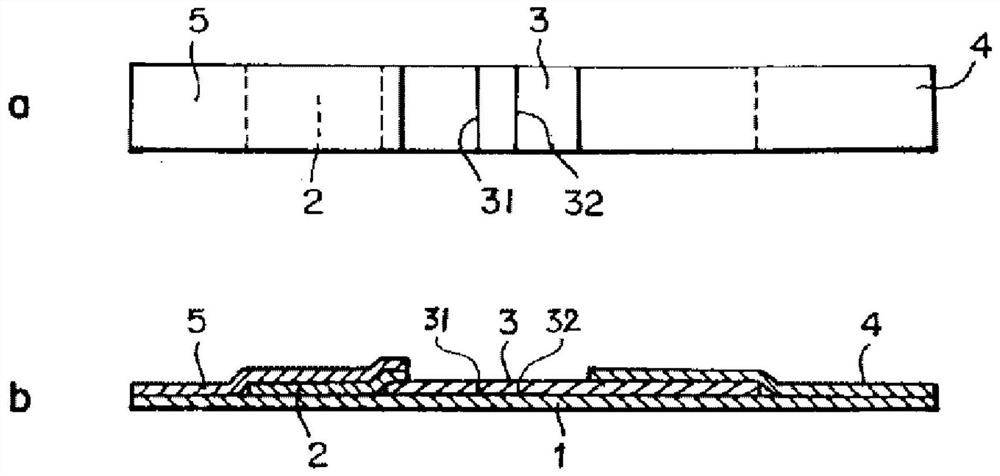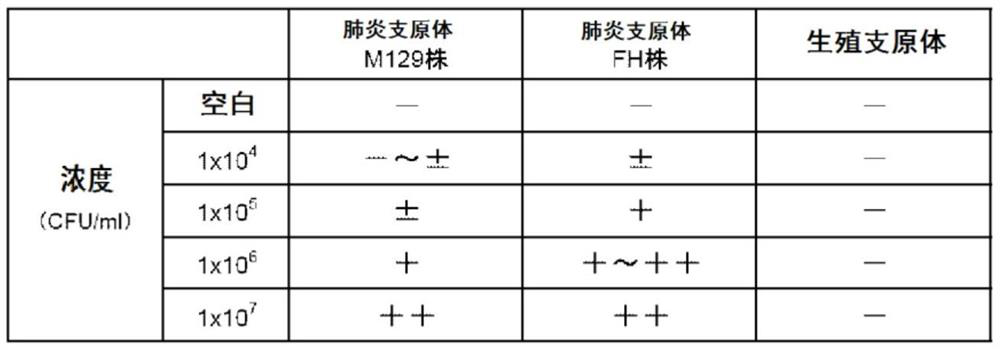Immunological detection method and kit for Mycoplasma pneumoniae
A Mycoplasma pneumoniae, immunoassay technology, applied in immunoassay, biological testing, immunoglobulin, etc., can solve the problems of secondary infection, unable to detect mutant strains of Mycoplasma pneumoniae, etc., and achieve high sensitivity effect
- Summary
- Abstract
- Description
- Claims
- Application Information
AI Technical Summary
Problems solved by technology
Method used
Image
Examples
Embodiment 1
[0080](Example 1: Expression and purification of recombinant P30 protein)
[0081]The amino acid sequence of P30 protein of Mycoplasma pneumoniae M129 strain was obtained from DDBJ (National Institute of Genetics Database). From the amino acid sequence of the aforementioned P30 protein, the amino acid sequence shown in SEQ ID NO: 2 (AA74-274), which is the extracellular region except the membrane perforating domain, was specified, and the corresponding gene sequence was synthesized. The His-tag expression vector, pET302 / NT-His, was cleaved with restriction enzyme EcoRI and treated with alkaline phosphatase as a dephosphorylation treatment, mixed with the aforementioned gene sequence, and used DAN Ligation Kit Ver .2 (Takara Bio) for ligation reaction. The recombinant P30 plasmid incorporating the target gene was introduced into E.coli BL(DE3)pLysS (product of Novagen), a host for recombinant protein expression. The introduced bacteria were cultured in LB agar plate medium, and the obta...
Embodiment 2
[0082](Example 2: Preparation of monoclonal antibodies against recombinant P30 protein)
[0083]Using the recombinant P30 protein obtained in Example 1 as an antigen for immunization, a monoclonal antibody against the recombinant P30 protein (hereinafter referred to as anti-P30 antibody) was prepared. The preparation of monoclonal antibodies is carried out according to conventional methods. 100 μg of recombinant P30 protein was mixed with an equivalent amount of Aduvant Complete Freund (product of Difco), and mice (BALB / c, 5 weeks old, Japan SLC) were immunized three times, and the spleen cells were used for cell fusion. For cell fusion, Sp2 / 0-Ag14 cells (Shulman et al., 1978), which are bone tumor cells of mice, were used. The following culture medium was used for cell culture: Dulbecco's Modified Eagle Medium (product of Gibco) added L-glutamine 0.3 mg / ml, penicillin G potassium 100 units / ml, streptomycin sulfate 100 μg / ml, Gander Gentacin (Gentacin) 40 μg / ml (hereinafter referred to...
Embodiment 3
[0084](Example 3: Preparation of monoclonal antibody)
[0085]The vegetatively propagated cells were intraperitoneally inoculated into mice (BALB / c, retire, Japanese SLC) pre-vaccinated with pristane (2,6,10,14-Tetramethylpentadecane (product of Sigma)), Collect ascites. The ascites fluid is supplied to the protein G column, and the monoclonal antibody is purified. The isotype of the prepared monoclonal antibody was identified using Mouse Monoloconal Antibody Isotyping Reagents (product of Sigma).
[0086]Finally, 4 cloned monoclonal antibody-producing cells against P30 protein were obtained.
PUM
 Login to View More
Login to View More Abstract
Description
Claims
Application Information
 Login to View More
Login to View More - R&D
- Intellectual Property
- Life Sciences
- Materials
- Tech Scout
- Unparalleled Data Quality
- Higher Quality Content
- 60% Fewer Hallucinations
Browse by: Latest US Patents, China's latest patents, Technical Efficacy Thesaurus, Application Domain, Technology Topic, Popular Technical Reports.
© 2025 PatSnap. All rights reserved.Legal|Privacy policy|Modern Slavery Act Transparency Statement|Sitemap|About US| Contact US: help@patsnap.com



